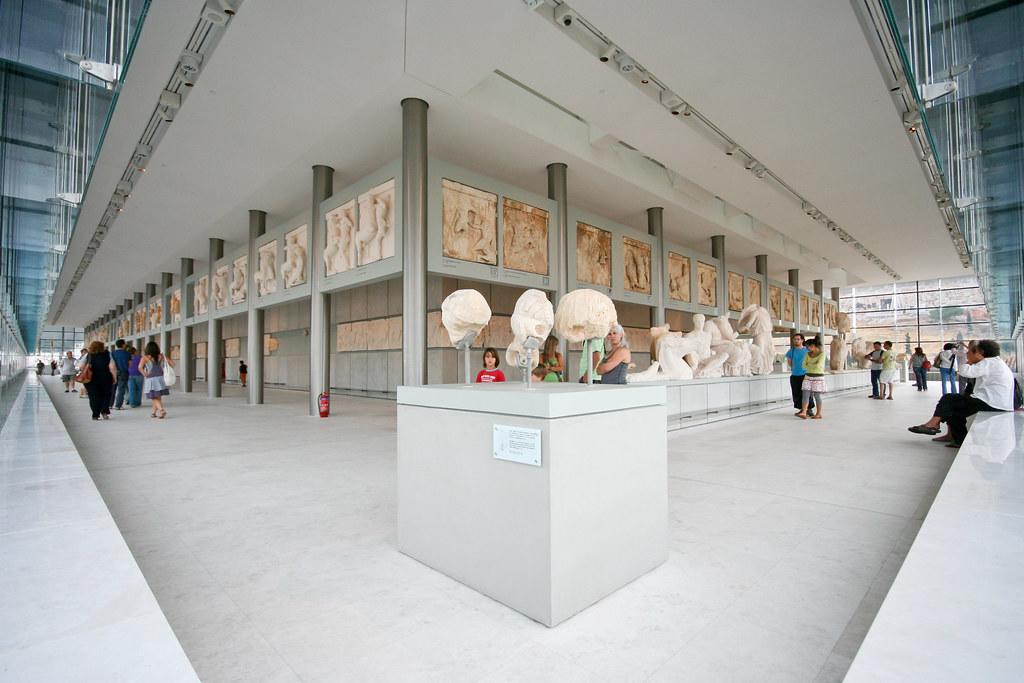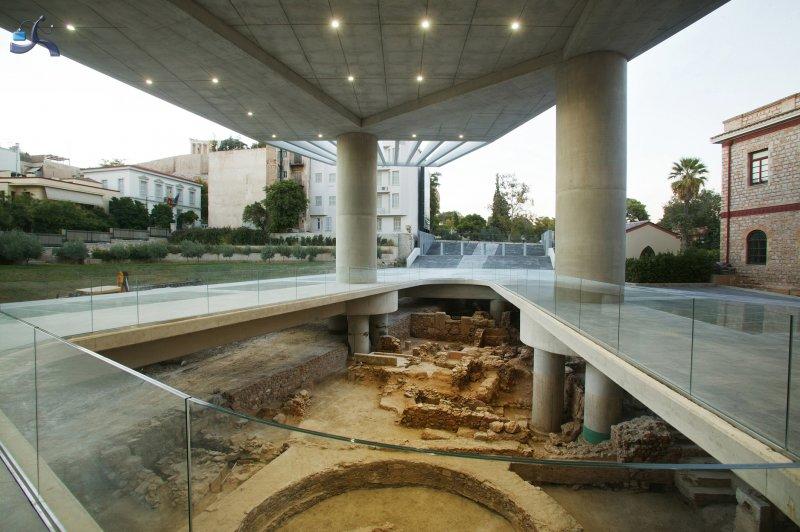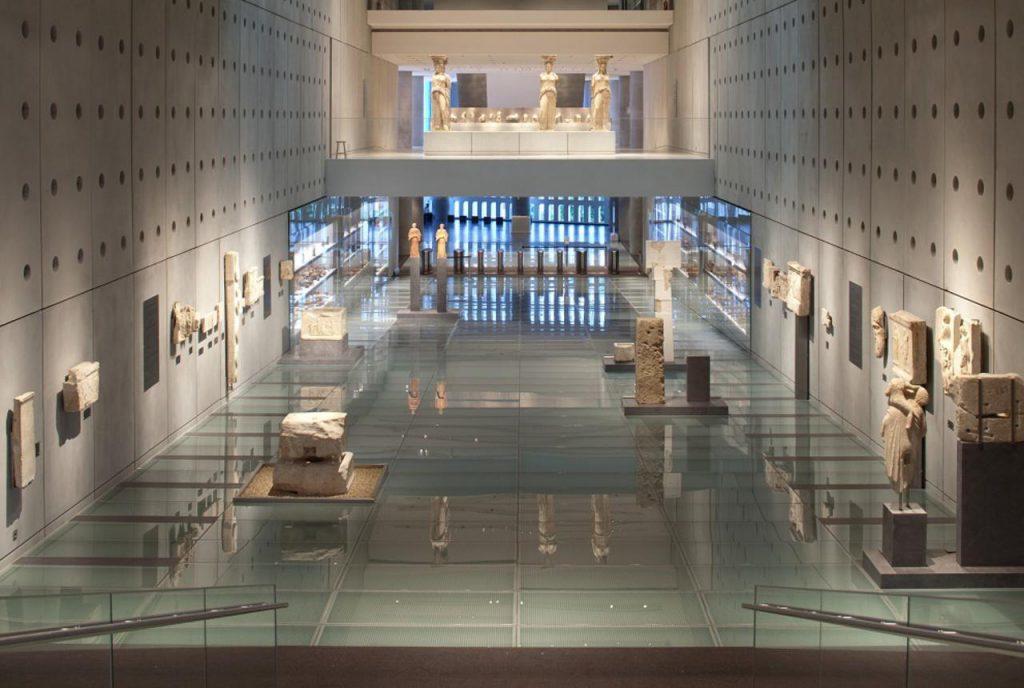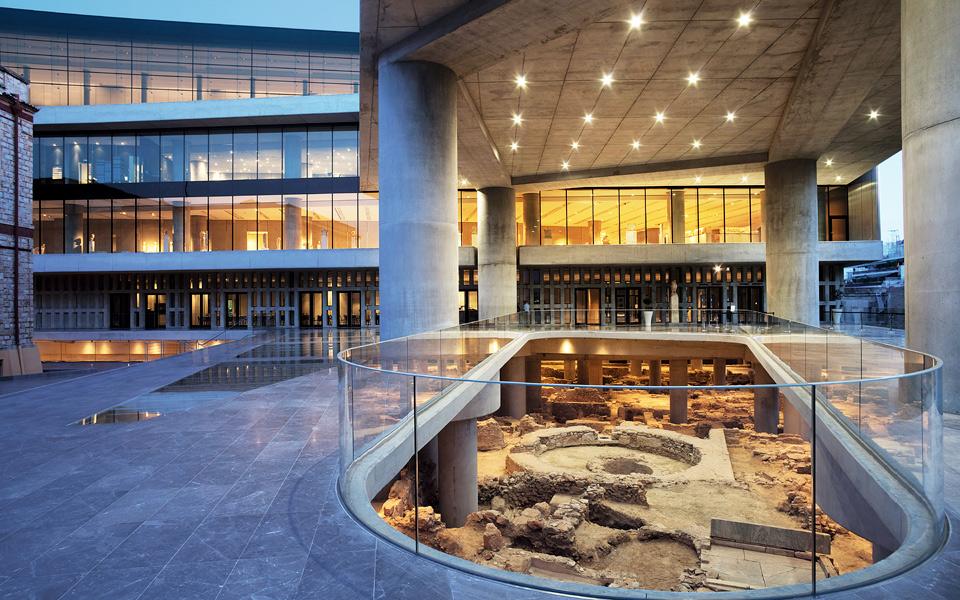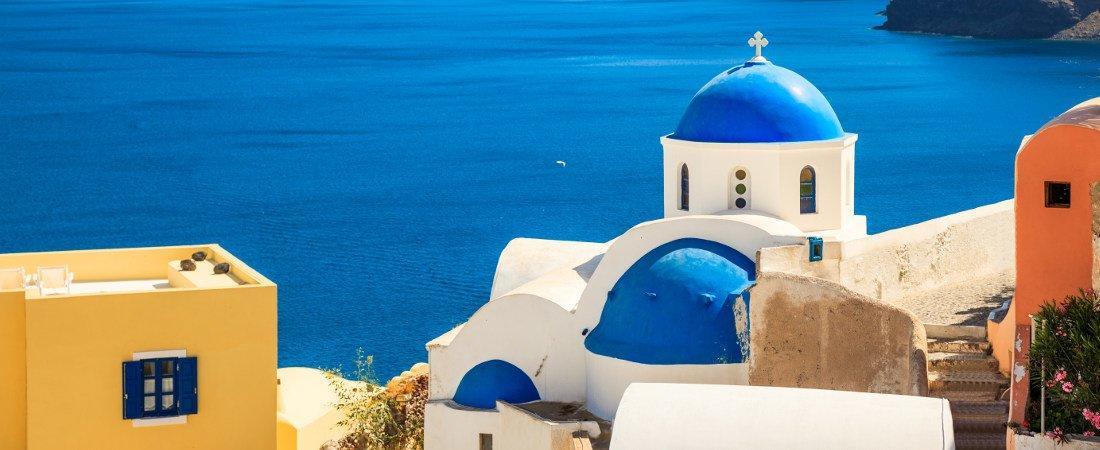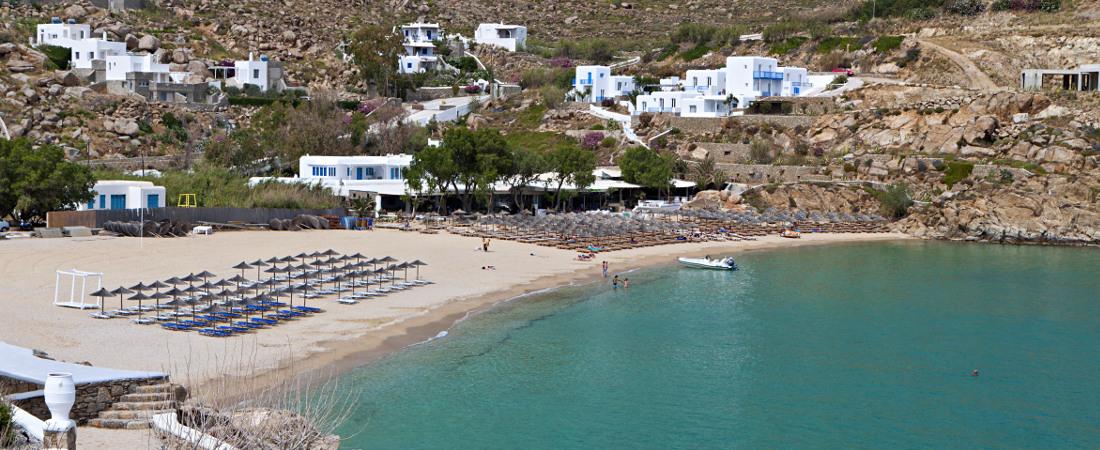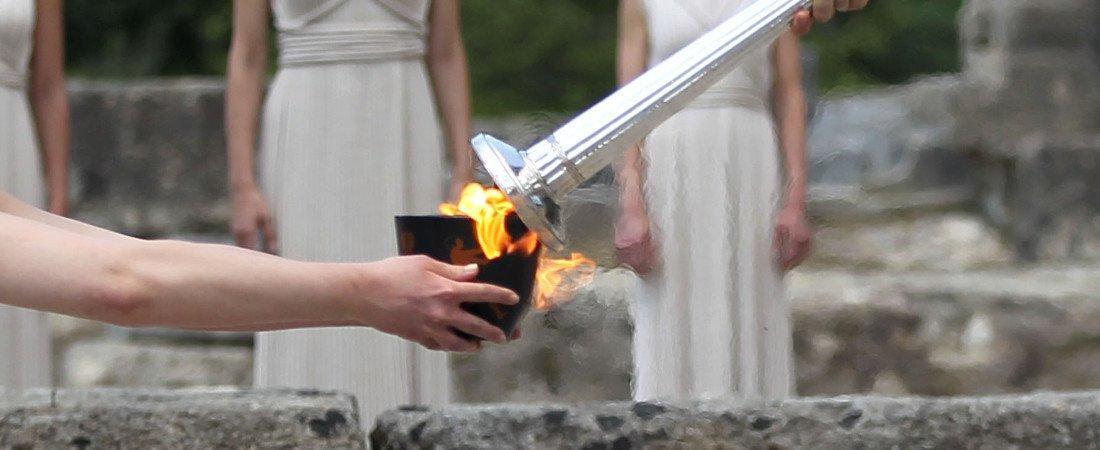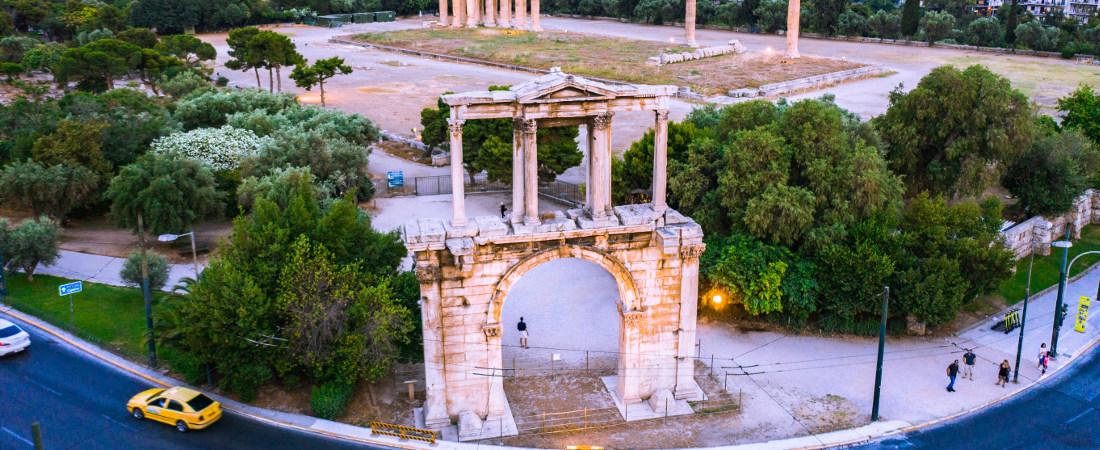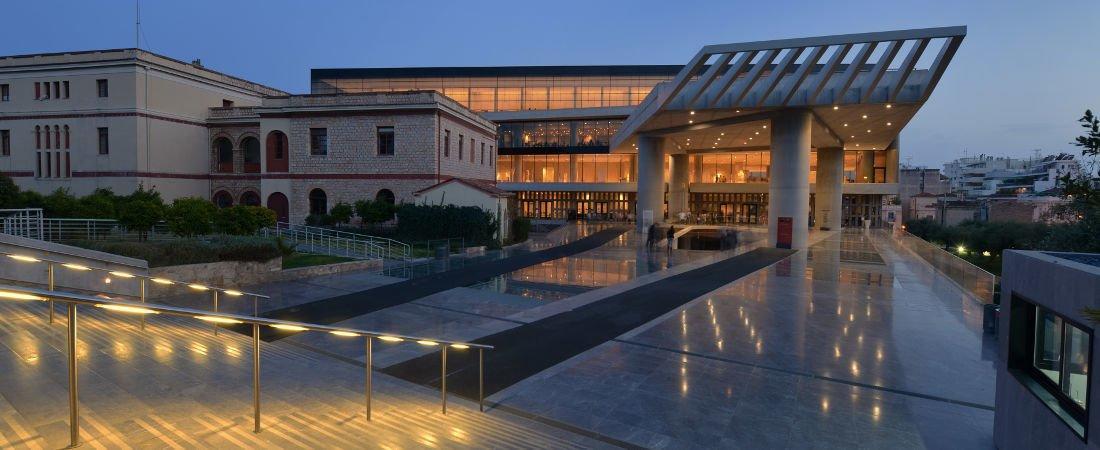The New Acropolis Museum
The New Acropolis Museum is situated under the south slope of The Acropolis of Athens, in Dionyssiou Areopagitou Street. You can have a chance to visit it on our city tour.
It is set only 280 meters (310 yd) away from The Parthenon, and a mere 400 meters (440 yd) walking distance from it. The museum is the largest modern building erected so close to the Ancient Site, although many other buildings from the last 150 years are located closer to The Acropolis of Athens.
The New Acropolis Museum was designed by Bernard Tschumi.
Tschumi’s design revolves around three concepts: light, movement, and a tectonic and programmatic element.
Together these characteristics turn the constraints of the site into an architectural opportunity. Also, they are offering a simple and precise museum with the mathematical and conceptual clarity of ancient Greek buildings.
The New Acropolis Museum was given to the public in 2009.
Its collections are exhibited on three levels. At the same time, a fourth middle level houses the auxiliary spaces such as the museum shop, the café, and the offices.
The Gallery of the Slopes of The Acropolis of Athens.
On the first level of the museum is the Gallery with findings of the Slopes of The Acropolis of Athens.
The long and rectangular hall, whose floor is sloping, resembles the ascension to the rock.
Archaic Gallery
The visitor is found at the large trapezoidal hall which accommodates the Archaic findings.
Archaic is the period throughout the 7th century BC, until the end of the Persian Wars (480/79 BC).
This period is characterized by the development of the City-State and the transition from Aristocracy to Tyranny and, eventually, Democracy.
It is also characterized by great achievements in the economy, art, and intellectual life.
Propylaea, Temple of Athena Nike, Erechtheum
On the same floor, there are also artifacts and sculptures from the other Acropolis of Athens buildings. For example, The Erechtheum, The Temple of Athena Nike, The Propylaea, and findings from the Roman and Early Christian period in Athens City.
For the first time, it is possible to view the Coffered Ceiling of The Propylaea and the Sculptures from The Parapet of The Temple of Athena Nike. Additionally, The Caryatids – or Korai of the Erechtheumat – proximity on the balcony overlooking the Gallery of the Slopes of the Acropolis of Athens.
The Parthenon Gallery with the metopes, the pediments and the frieze.
The Parthenon Hall has the same orientation as the temple on the Acropolis of Athens. The use of glass allows the natural light to enter.
In the center of The Parthenon Gallery on the third floor, the visitor can observe a video presentation. The presentation is about The Parthenon and the sculptural decoration of the monument.
In the same area, ancient marble inscriptions present a recording of detailed cost records of the construction of The Parthenon and The Statue of Athena Parthenos.
As a result, visitors receive detailed information on how democratic bodies functioned in the 5th century BC. The installation of the frieze of The Parthenon on the rectangular cement core has the same dimensions as the cella of The Parthenon enabling a comprehensive viewing of the details of the frieze, as one takes the perimetric walk of the Gallery.
The narrative of the story of the Panathenaic Procession is pieced together with a combination of the original blocks of the frieze and cast copies of the pieces in museums abroad, such as the British Museum and the Louvre.
From the 5th c. BC to the 5th c. AD.
The exhibition concludes on the north side of the first-floor gallery. Reliefs of Athenian Decrees, Impressive Portraits, Roman Copies of Classical Masterpieces, and Depictions of Philosophers and Historical Figures are the exhibits covering the period from the 5th century BC to the 5th century AD.
These collections of the New Acropolis Museum include the Sanctuary of Artemis Brauronia, the Votives of the Classical and Hellenistic Periods, and the Votives of the Roman Period.
As the New Acropolis Museum is built over an extensive Archaeological Site, the floor, outside and inside, is often transparent using glass and thus the visitor can see the excavations below. Also, it provides an amphitheater, a virtual theater and a hall for temporary exhibitions. Furthermore it offers all the amenities expected in an international museum of the 21st century.
See the Panathenaic Stadium with one of our tours:
- Athens Morning Sightseeing Tour With Visit Of Acropolis of Athens and New Acropolis Museum
- 7 Day Combined Tour Package to Athens City and Santorini Island
- 7 Day Combined Tour Package to Athens City and Mykonos Island
- 8 Day Combined Tour Package to the Islands and Historical Sites of Greece


